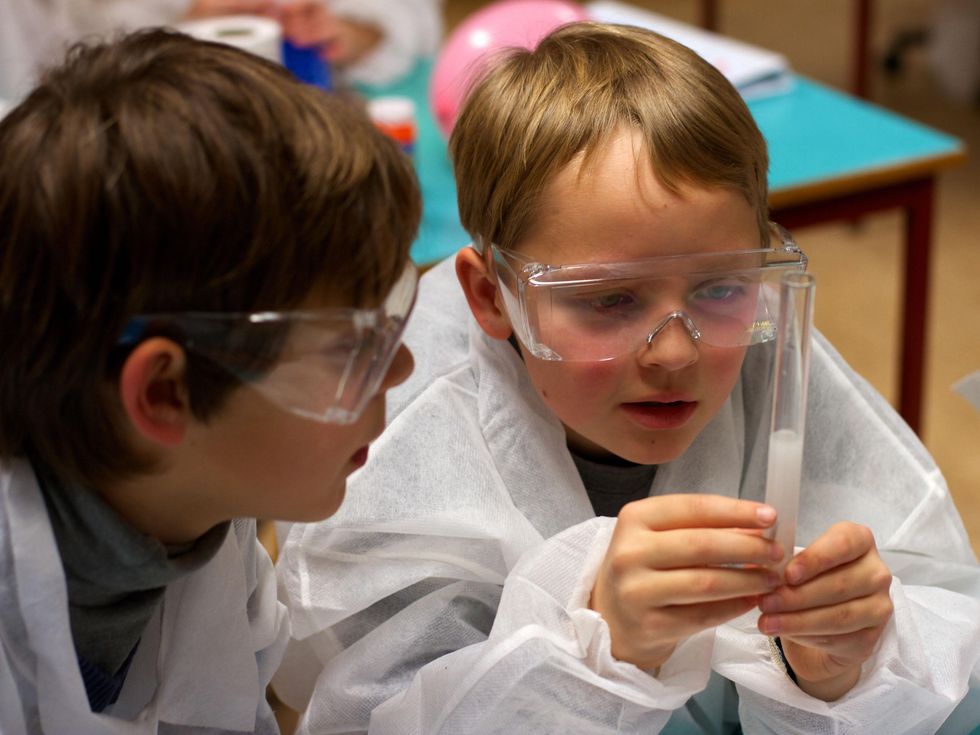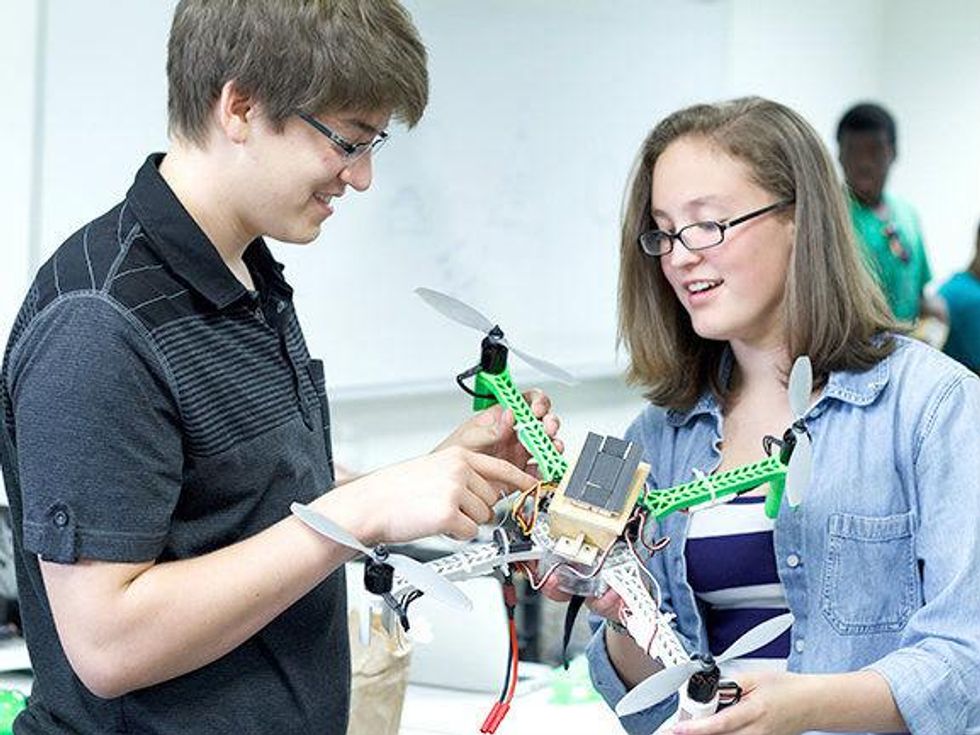TEDxSMU Teasers
TEDxSMU speaker Dr. Kenneth Berry on how to get kids jazzed about science
Dr. Kenneth Berry knows the United States lags in math and science. As assistant director of the UT Dallas Science and Engineering Education Center, it’s his job to inspire students to find the joys in the sciences.
Dr. Berry speaks at TEDxSMU on October 19, at Dallas City Performance Hall. The theme this year is “And Then?” as lecturers are asked to “ask bigger questions and dig a little deeper.” Before he hits the stage, we talked to Dr. Berry about his upcoming talk, how to begin fixing the education deficit and whether robots will enslave mankind.
CultureMap: Without giving the whole thing away, what will you be talking about at TEDxSMU?
Dr. Kenneth Berry: It’s primarily sports of the mind — a kind of a contrast between athletics, which everyone knows about and gets excited about and students enjoy, and then comparing it to what happens in the science and math classroom.
“Knowledge is easy to get to; you can Google it,” Berry says. “You don’t have to know it in your mind anymore. Application takes thinking.”
The classes can be kind of boring, but they don’t have to be. It’s about making it more enjoyable and bring in competitive nature. It’s important to make it contextual and relevant to what they’re doing. Instead of just learning math and science in how they’re often done in a non-contextual way, we want them to learn so they can build a robot or a solar car.
There’s a growing interest in sports of the mind in the country. There are 300,000 students in K-12 in robotics competitions; in colleges, there are solar car comps, Eco-marathon and flying robot competitions; at a professional level, there’s the X Prize.
There are ways to makes the classroom as exciting as the sports event. I compare football to a robotics competition. They’re both good and useful and should be done. But perhaps we should start to build up the robotics teams and other competitions like it.
CM: The U.S. education system is notoriously bad at math and science compared to other first-world countries. Are these competitions the secret to improving our results?
KB: I think it’s one of the ways we can. One of the things that’s really pushed a lot of my work was, I had a conversation with one of the heads of the Mars program at NASA. I said, “You must like a lot of math and science to do so well in the engineering aspects.”
He told me, “I didn’t like the math or science growing up, but I needed to do them to get to the toys.”
Kids don’t know how fun it is to design stuff with math and science. We need to make sure that they know about it and do hard work to get there. We’ve been putting the cart before the horse.
“Kids don’t know how fun it is to design stuff with math and science. We need to make sure that they know about it and do hard work to get there.”
It’s important to show why anyone would dedicate his or her life to the process of engineering or science. They do it because there’s something very fun and useful about it. If we can give that to them, they’ll see relevance and be willing to put in more work.
I like to use Robert Ballard’s example of how wind sprints are to games what math problems are for the sciences. In football you do push-ups and core exercises during practice. You don’t like them, but you do them because you have a game on Friday night.
If we can give kids a near term to apply what they’ve learned, then it will make them more interested. You’re right; we’re not doing a good job encouraging kids. If they can’t apply it and don’t see the immediate relevance, it’s lost on them.
CM: Speaking of toys, you’ve worked at the Jet Propulsion Lab at NASA. That’s got to be about the best toy store around.
KB: It’s got the best toys in the world. When I went to JPL, I was a science teacher. I was looking forward to meeting scientists in real life and what motivates them so I could show kids how exciting it is.
What surprised me is that it took me a year to find a pure mathematician or scientist. What I found in abundance, like 10 times as many, is engineers. That made me rethink what it means to be a science teacher.
I’m not supposed to be training scientists. There’s a huge need for people who can apply their math and science skills, and what I learned is that we want more people to apply math and science than do the pure math and science. It’s about focusing on the application.
CM: Aside from the competitions, what are some ways to work on science and math education in the U.S.?
KB: I think there’s a big disconnect. It comes from how we measure stuff. We measure according to tests, and the easiest thing to test is knowledge. It’s not easy to measure innovation or creativity. Everyone figures innovation is important; it keeps our economy going, but we can’t measure it well.
Schools are being graded according to the knowledge that kids can spew out on a test. Knowledge is easy to get to; you can Google it. You don’t have to know it in your mind anymore.
“Robots will never take over, in my mind. The best application has been robots that work with people, doing things we don’t like to do.”
Application takes thinking. Everything we do these days is about wanting more thinking, but we’re stuck in an education that is all about memorization. If you talk to Texas Essential Knowledge and Skills, they have two standards: what you need to know and what you need to do. It’s knowledge vs. skill.
What we test very well is the knowledge; what we don’t test well is the skill. It’s like testing a piano player on notes on sheet music and assuming they’d be good at piano because they know the notes. They have to practice and develop the skill.
CM: Even if a student doesn’t go into engineering or the sciences, what can they take with them as they move forward?
KB: It’s like tools. You need to know certain tools to survive. If you don’t know how to use a wrench or screwdriver, then working in your house, the very basic things — fixing your toilet, for example — become difficult.
There’s a new set of skills that is just as essential. Computer-aided design (CAD) is a design tool for creating things. If you don’t know CAD, you’re going to be at a disadvantage in the future. You may not be able to design things as simple as a dress or work in a salon.
Instead of ordering things, you’ll design them in CAD and print them. It’s possible that manufacturers will just make CAD drawings, they’ll send the file to you, you print it and have it.
Programming is critical these days. Understanding how networks work. You have to understand how that works to really live in a networked society. How do you protect yourself in a network, how do you take best advantage? These are new tools that everyone really needs to know. If you do STEM [Science, Technology, Engineering and Mathematics] stuff, you learn the tools.
CM: What’s exciting you in the world of robotics these days?
KB: I love the idea of the 3D printers, to be able to build a 1957 Chevy and just order it and have it done. You could have all the new stuff under the engine with the classic look. That would be neat. Robotics is such a huge field; there are so many exciting things.
In surgery — fortunately, I’m not sick right now — I’m sure it’d be nice to have a da Vinci robot working on me instead of a doctor with the shakes or something. I love the little satellite robots that fly in space and take data for you and things like that. I really like the idea of a car driving me to work.
It’s like the line in iRobot where the guy tells Will Smith that he’s crazy for driving this thing with 50 pounds of explosive fuel and that he needs to let the car drive itself. I think that’s completely true. If the cars were to drive themselves, we would get there much faster. And I’d love to get pizza from a delivery robot.
CM: Finally, when will robots take over, and will they allow humans to stick around?
KB: Robots will never take over, in my mind. The best application has been robots that work with people, doing things we don’t like to do. There are four D’s of robot work: dirty, dangerous, delicate and dull. They do any of those things really well.
We don’t want to give up the things we do very well. They will never be creative; they can’t observe patterns as well as we do. We can come up with conclusions from patterns very well. They don’t make decisions very well with the information they’re given.
Robots really shine when they’re complementing human skills. When those two things work together, you have a best-case scenario. It’s not possible or interesting to make a robot that does all the things humans do. So I don’t think they’ll ever take over.
UTD's Dr. Kenneth Berry speaks at TEDxSMU about getting children to find the joy of science and math and the "sports of the mind."


